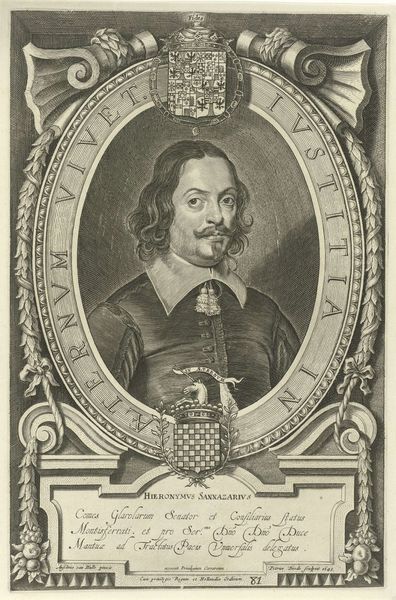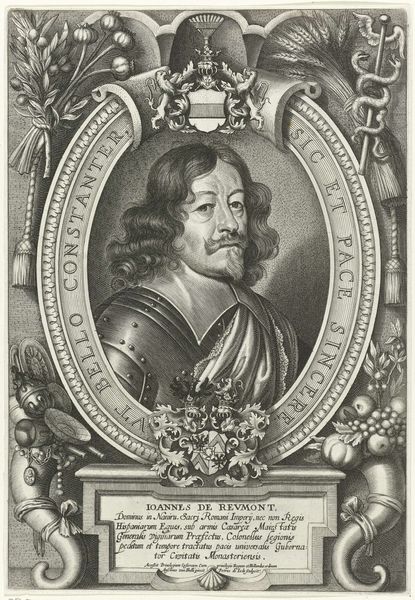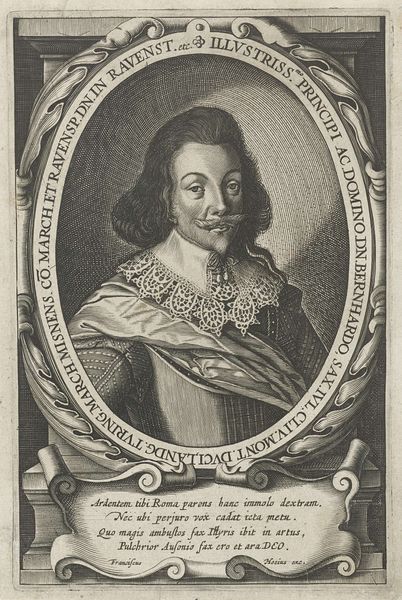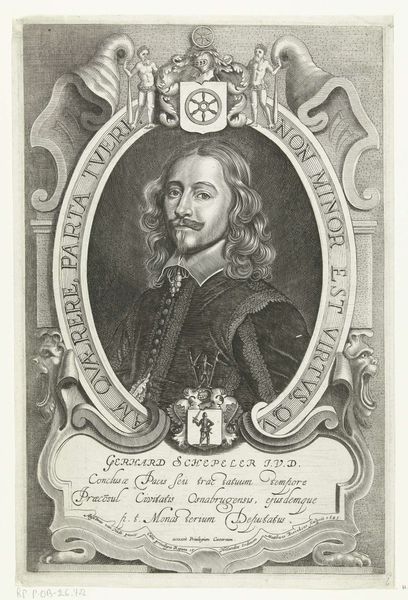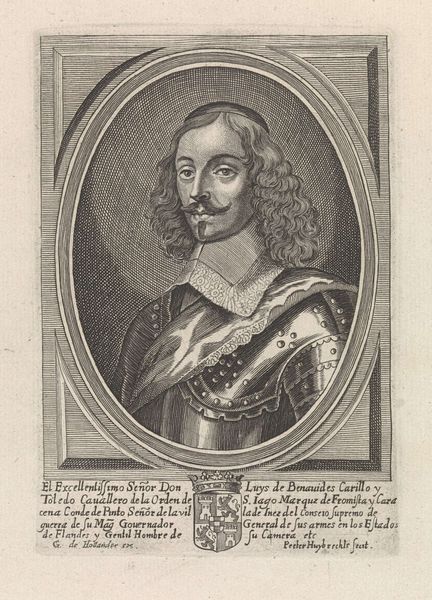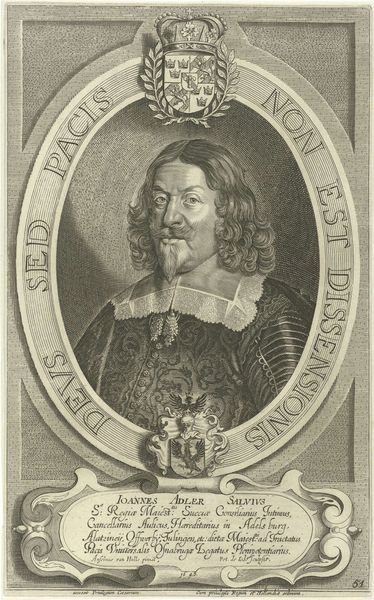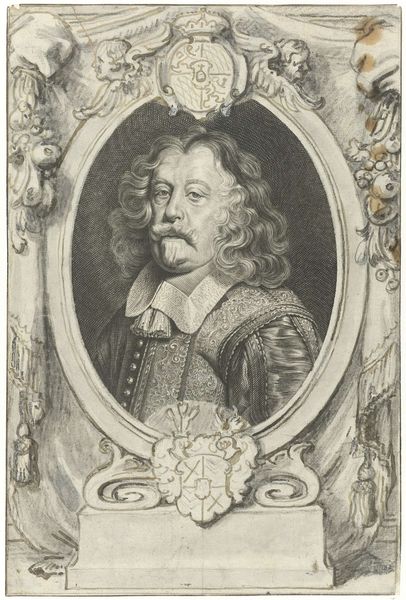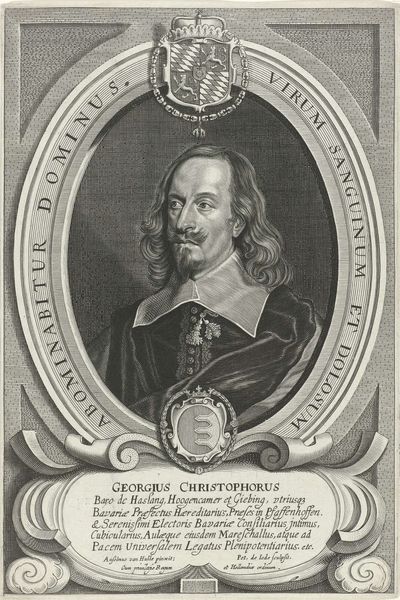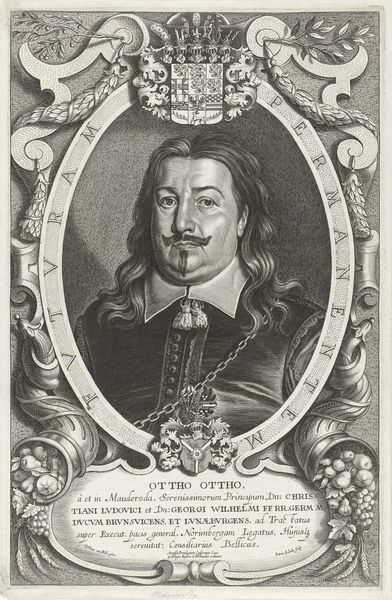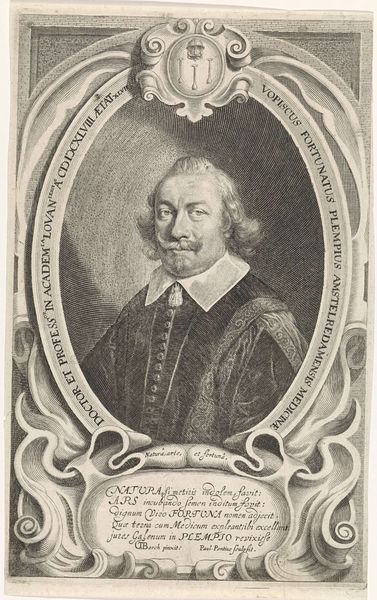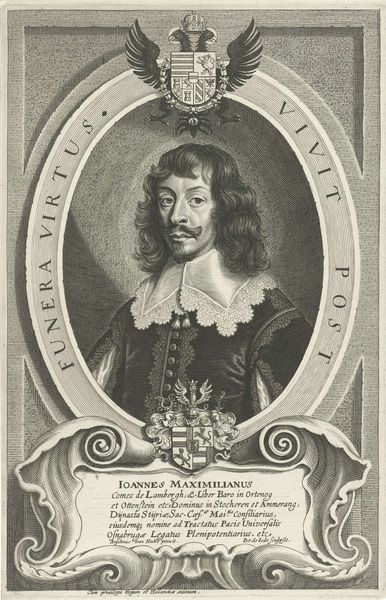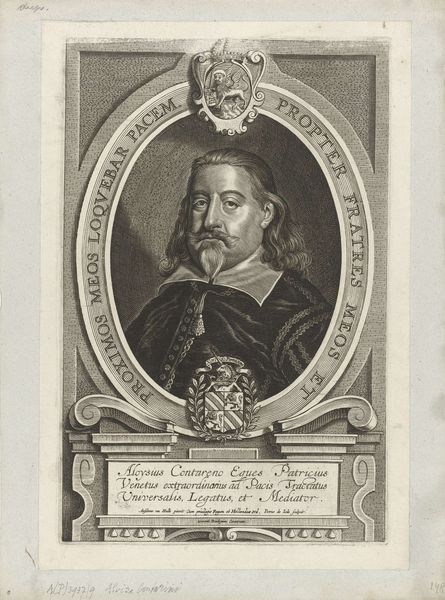
Dimensions: height 102 mm, width 80 mm
Copyright: Rijks Museum: Open Domain
Curator: This print, an intaglio engraving by Jean Bernard, titled "Trosje aalbessen," likely produced sometime between 1775 and 1833, immediately strikes me with its stern elegance. Editor: It's the frame for me. The way those somewhat menacing winged figures hold up the dedication… there’s an imposing quality to the whole piece, even before you consider the subject's expression. It gives a very definitive, power-filled baroque feeling. Curator: The inscription surrounding the portrait, "Cogita Mori, Ante Mortem," really reinforces that solemn atmosphere. "Think of death, before death," is quite a declaration of intent, and informs our reading of the sitter's countenance, doesn't it? I wonder who he was? Editor: The text below identifies him as Nicolaus Georgius de Rajgersperg, Imperial Counselor, Advisor to the Archbishop Prince Elector of Mainz, and a delegate to universal peace treaties. Clearly a man of considerable power and influence, and the symbolic crests further solidify that. His gaze, framed by those curling locks and crisp lace collar, has such gravitas. Curator: Precisely. And considering Mainz's importance in the Holy Roman Empire at this time, the emblems featured could hint at specific political affiliations or heraldic lineage within the complicated system. It speaks to an established power structure and family legacy. These emblems would be full of meaning to those in the society, in their own cultural milieu, with its particular understanding of images and family. The iconography serves to place the individual in his social, and possibly religious or philosophical, order. Editor: Indeed, everything works towards constructing an image of authority and perhaps a consciousness of one's own mortality. From a contemporary perspective, you know, steeped in mass media and perhaps less accustomed to such formalized portraiture, it serves as a window into the elaborate rituals and hierarchies of power from centuries past. And how someone wanted to be remembered. Curator: Right. The piece encourages you to examine not only the individual portrayed, but also the entire framework of signs and symbols. It presents a meditation on death. That phrase "Think of death" reminds me of how such symbolic communication, the meaning invested by those figures and the portrait's composition, continues resonating over the centuries, shaping our emotional and intellectual responses. Editor: Absolutely. Even within the structured formality, a certain timeless quality resonates. The play of light, the detail in the engraving...they speak across time.
Comments
No comments
Be the first to comment and join the conversation on the ultimate creative platform.

